Photo courtesy of Caylor Arnold-USA TODAY Sports
Cubs manager Joe Maddon has been known for many eclectic things that make him who he is: his glasses, his casual demeanor, The Cousin Eddie, his candid approach with pretty much whomever he encounters, and so much more. Those things are all charming and make him the Joe Maddon we all know and love. But when it comes to baseball, one of the most eclectic and important things about him is his unconventional approach to the game.
One of these unconventional methods (though becoming more widely practiced in baseball today) is one that he began using during his days in Tampa Bay: batting an impact hitter second. Maddon once stated during his tenure in Tampa that the two-hole hitter isn’t being looked at the same as it was even as recently as 20 years ago. And he’s right.
The first time that I noticed Anthony Rizzo was batting in the two-spot this season, I was most definitely caught off guard. Historically, Rizzo appears to be in the mold of a prototypical three- or four-spot hitter. And, for the most part, that’s where he’s been during his career, spending the first few games of the 2015 season batting third, and most of 2014 in the four-hole. As far as last year is concerned, this Cubs club has leaped light years from what it was at this time in 2014, and the shift in talent as well as managerial styles have most definitely called for some change.
Rizzo has gotten off to a slower start to the season power-wise, only having hit two home runs in the Cubs first 20 games, but making up for it with his exceptional on-base presence. At the end of April of 2014, batting primarily fourth, Rizzo finished the month with a line of .275/.380/.418 with four home runs. In 2015, Rizzo has finished April with just two home runs, but his line shows major improvement, sitting at .324/.478/.471.
Rizzo has a 15.6 percent walk rate this season, accompanied by the incredible seven hit by pitches he’s endured in April alone. But when looking at this seasons OBP leaders, Rizzo (.478, 90 PA) is second, just behind Cardinals’ outfielder Matt Holliday (.500, 80 PA)—interestingly, next on the list Dodgers’ rookie Joc Pederson (.461, 77 PA), who has a staggering walk rate of 22 percent.
There are some significant differences in the numbers that Rizzo has put up when batting second as opposed to third though, that should be met with some caution. When batting second this season, Rizzo has had a .259/.364/.407 line in seven games with 33 PA, and when batting in the traditional three-spot, he has had a line of .366/.544/.512 in 13 games with 57 PA.
Neither of these lines are terrible though, in fact they’re both very good—it’s just that one is better than the other. Which makes Rizzo versatile in both spots, and is most likely why Maddon has been flip flopping him every so often with Jorge Soler, considering Soler is suffering a small wrinkle in his usually noteworthy power and performance.
Another benefit of batting someone who shows significant plate production the way Rizzo does, though it may not be in the form of home runs, is that on average the number-two hitter sees five plate appearances per game, where as the three-spot hitter may only see four. This rings true for Rizzo as well, who has seen closer to five plate appearances while batting in the two-spot, and closer to four when batting third. It’s traditionally recognized among modern baseball minds (mostly due to The Book, by Tom Tango) that the number two hitter should be leveraged in situations just the same as a number three hitter, but this batter will face these situations more often, and that this hitter should be a high-OBP type. Rizzo certainly fits that description based on both his numbers this April and from 2014.
Now the deeper question. Why is Rizzo so valuable in the two or three spot, as opposed to his role last year as the clean-up man? Part of Rizzo’s secret is not even that much of a secret at all. It’s just that in a lineup that is currently littered with new young faces that have more of a tendency to hack at many of the pitches they see, Rizzo has superb plate discipline and pitch recognition.
These maps show the location, swing percentage, and whiff percentage of pitches Rizzo saw in April. We see that Rizzo sees a large majority of pitches low and away—hardly an unusual trend. Rizzo’s swing percentage map neatly quantifies his strike-zone recognition, with a large dose of dark red right in the heart of the zone. Rizzo knows which pitches to swing at and even when he misses, it’s quite rare.
Now look at these maps from April of 2014, and the major improvements Rizzo has made.
Though he’s seeing fairly the same location of pitches, he’s swinging at less pitches outside the zone this season, and whiffing on noticeably less pitches in general. See that hole low and in the pitcher’s successfully exploited last April? It’s gone, completely non-existent this April. The man evolved considerably last season, and it doesn’t appear that he was satisfied with those improvements as he continues to get better.
So although we’ve only seen half the amount of home runs out of Rizzo in April than he produced by this time last year, his line has more than significantly improved, his on-base percentage has gotten extremely better, which has led to a comfortable position in the two-spot for him.
Rizzo’s sudden emergence as an impressive baserunner has made quite the impact early on as well. Rizzo already has six stolen bases, only being caught stealing once this season (during Wednesday’s matchup against the Pirates). The six steals surpasses last season’s total (five), matches his career-high set in 2013, and puts him just ten shy of his career total upon entering the season.
Rizzo established himself as one of the premier power hitters in the game last season, joining just ten other players to deliver 30 or more home runs in 2014. However, it’s clear that power isn’t his lone feature, in fact, he’s incredibly valuable despite having just two home runs right now. A new role has been procured for Rizzo, and hitting someone with exceptional talent like his in the two-spot shows that not only are the dynamics of this game continuing to change, but that the Cubs batting order is flush with talent as well as versatility.
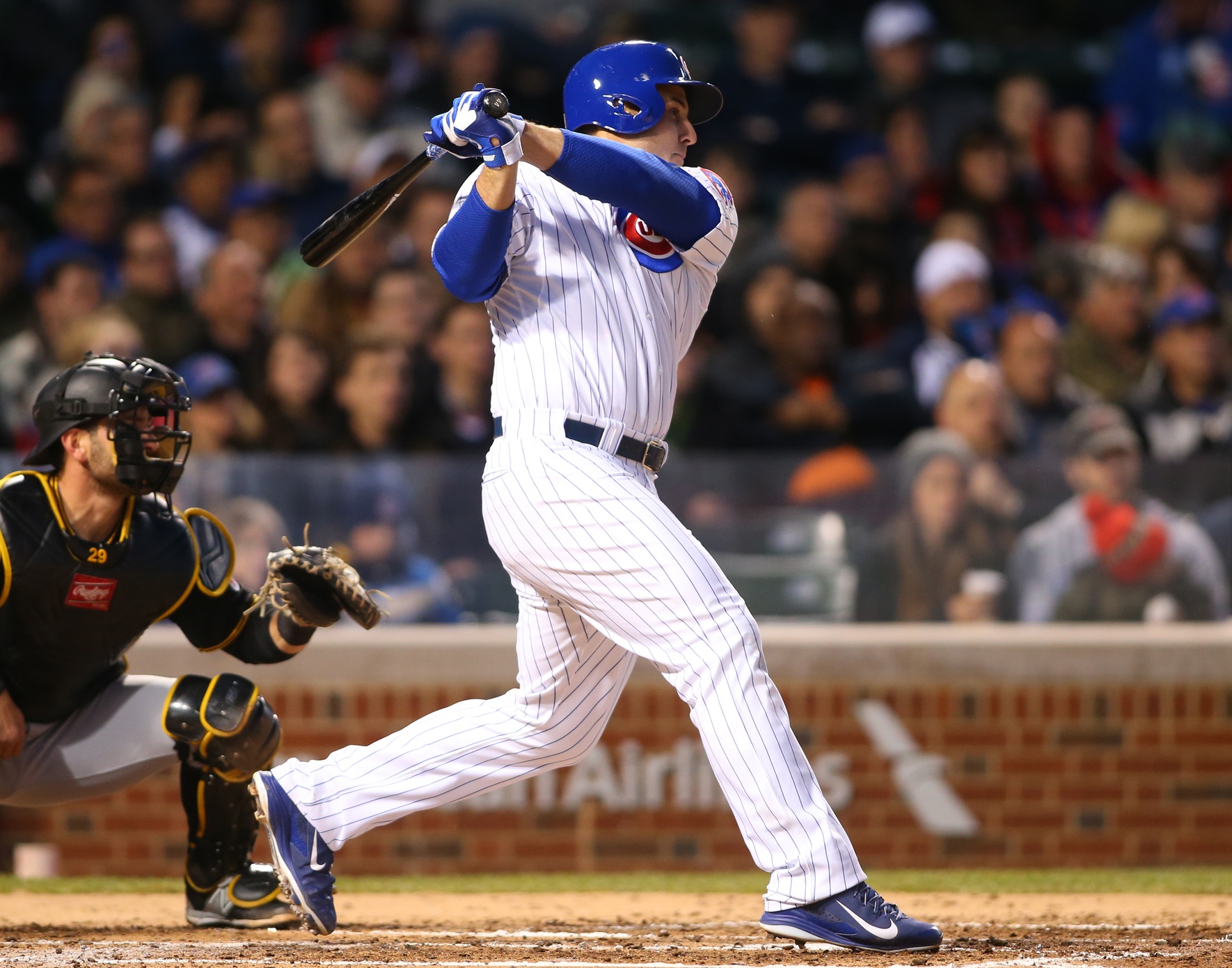
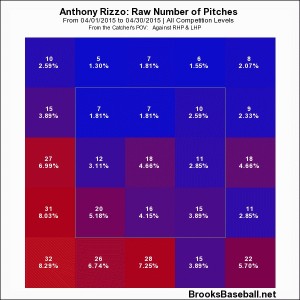
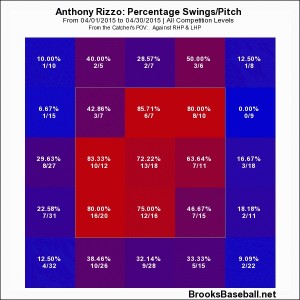
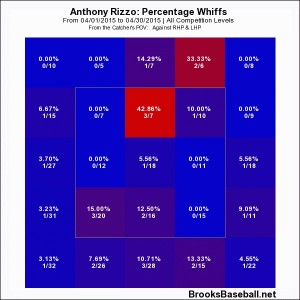
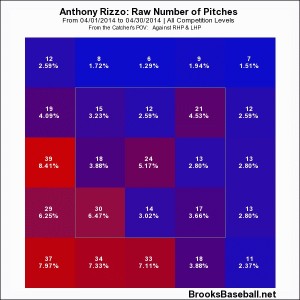
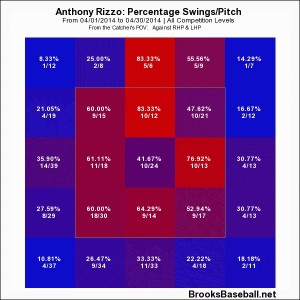
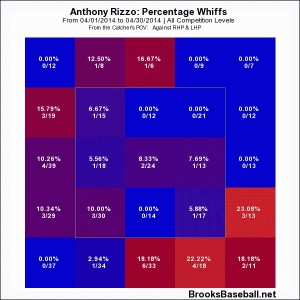
So he trained with Joey Votto… And then became Joey Votto. I see nothing wrong with this.